2001: A Space Odyssey Ideology Explained
Legacy of 2001:A Space Odyssey:-
2001: A Space Odyssey is widely regarded as among the greatest and most influential films ever made. In 1991, it was deemed "culturally, historically, or aesthetically significant" by the United States Library of Congress and selected for preservation in the National Film Registry.In 2010, it was named the greatest film of all time by The Moving Arts Film Journal.
It is a source of inspiration for many directors like Steven Spielberg and George lucas.
Ideology of 2001:A Space Odyssey and why it is a cult classic sci-fi film:-
Brief context and description of movie:-
The movie consists of four parts:
- Unseen aliens observe early humans struggling desperately to survive in a brutal world, and realize they are on the verge of becoming intelligent beings, they just need a little help. They create a monolith which is designed to nudge the humans along their evolutionary path. They place it where the humans will find it and interact with it. Touching it awakens some dormant intelligence and the humans begin their journey as sentient beings.
- Humans, having evolved to a point where they are just leaving their home planet, are busy exploring the moon. They detect a strong magnetic anomaly buried underneath the moon’s surface. They excavate and find the monolith, which was buried when humans were just beginning their long road to sentience, knowing that the humans would eventually find it when they start to travel into space. Once uncovered, sunlight strikes the monolith and triggers a signal back to the original aliens to let them know the humans have begun venturing into space.
- Curious humans can see that the signal from the moon monolith is directed at Jupiter. Not knowing anything else, the humans secretly build a spaceship to travel there to find out more about the aliens, even though they know it will take over a year to get there. (the Discovery wasn’t actually built in secret, only its true mission was kept secret. In fact part of the movie shows a BBC interview with the astronauts that would be broadcast to a worldwide audience. This plot device was useful in explaining to the audience who and what HAL is.) Several of the astronauts who know about the secret mission are placed aboard in suspended animation to conserve resources. Two astronauts are left awake to pilot and maintain the ship on its long transit to Jupiter, but the true mission is kept from them. The spaceship itself is almost sentient, being controlled by a highly intelligent computer (HAL 9000) which does know the true mission but is programmed to keep it secret until they arrive at Jupiter. A logical conflict arises within the computer which has come to the conclusion that the humans are too risky to be trusted with the success of the mission. So it decides that the best way to ensure the success of the mission is to eliminate the humans. It baits one of the astronauts out side of the ship by falsely claiming that a critical part of the communications system is failing. While attempting to replace the failing equipment the computer is able to kill the astronaut using one of the service pods. When the other astronaut attempts to rescue the stricken astronaut the computer kills the hibernating astronauts in their sleep. Ultimately the lone surviving astronaut is able to return to the ship and overcome the computer. In its final moments of awareness, the computer realizes that the surviving astronaut is the only chance for the mission to succeed and so it reveals the actual mission to him which has been kept secret during the entire trip.
- The lone astronaut arrives at Jupiter and finds a counterpart to the moon monolith orbiting quietly around Jupiter. The astronaut uses the only pod left in the ship to go out and and get a closer look. As he gets close to the floating monolith, a cosmic gateway opens and it transports him light years away. Ultimately he arrives at his destination— a place that the aliens have prepared for him which resembles a luxurious apartment home. In a short series of shots the astronaut quickly ages as the aliens prepare him for his destiny. The movie ends much like it had begun, with the aliens pushing the human into a new stage of evolution, a being unbound by space and time. This being returns to earth to help the rest of humanity move on with their own transformation.
Summarization of 2001:A Space Odyssey:-
- At the beginning, there was darkness everywhere.
- Planets came into existence.
- Earth came into existence.
- Humankind came into existence.(in the form of apes)
- They learnt fighting.
- Man found his first tool.
.....his final tool.
- Into other worlds.
- Artificial Intelligence came into existence.(Hal9000)
- Artificial Intelligence takes over.
- Man given the knowledge by them who were keeping track of Man’s progress.
- One man is given unlimited knowledge and power, and is turned into a Starchild/demi-God, and is sent back to earth by “them” to prevent any damage that men may do to their young planet.
- His final transformation! He becomes a God-like figure/a protector of the Earthlings.
What makes 2001:A Space Odyssey a masterpiece:-
The use of Music:-
"A film is — or should be — more like music than like fiction. It should be a progression of moods and feelings. The theme, what’s behind the emotion, the meaning, all that comes later.”
Classical music is used throughout the entire film, adding to the observational feel. There were two original scores made for this film, however Kubrick chose to use music that is culturally significant and itself timeless. The songs featured in Space Odyssey are spectacularly compelling and chaotic; as if they were enormous orchestral blocks of sound. Kubrick felt that these influential and powerful songs brought the emotion and mood of the story through where dialogue and visuals would not. Also that the music would match the epic importance of our cycle of evolution and themes represented his film.
It also helps to represent how surreal and inconceivably vast the cosmos is. Moving and changing the mood through scenes that the audience might have trouble comprehending the importance of. The most well known of the sound track ‘Also sprach Zarathustra’ is used in both the opening and conclusion of the film.
It also helps to represent how surreal and inconceivably vast the cosmos is. Moving and changing the mood through scenes that the audience might have trouble comprehending the importance of. The most well known of the sound track ‘Also sprach Zarathustra’ is used in both the opening and conclusion of the film.
Colour grading in the film:-
The colour and aesthetics of the film were clean and effective; using reds and yellows. These bright colours contrast the man made environment and the natural landscapes and cosmos. Reds and yellows paired with black and white, in a sterile, manicured environment positioned the audience to get a sense of controlled ‘ideal’ artificial living space. The red lighting was effective in representing danger and evil throughout the film.
Visual effects in the movie:-
2001:A Space Odyssey is one of the most visually spectacular films.The aesthetic and production design is incredibly polished and original; it has been able to look realistically futuristic even today, where many other sci-fi films use technology of their time, which ages as the film does. The use of rotating sets convincingly represented the surreal warped gravity of the space ship. Kubrick’s sterile directorial and visual style is obvious throughout the film and sets. The originality and logical thought gone into creating the sets, including the technology in such a futuristic setting cannot be dated.The special effects are incredibly artistic, well executed and realistic enough to be on par with that of todays films.
These special effects hypnotises the viewers and get them invested into film.
Theme of film:-
Naturally the film begins with the beginning of time and then moves through three sections from the Apes and creation of technology, to the future of our race imagined by Kubrick as a space age, basically finishing with the art of creation and recreation with a man ageing, dying and being reborn as a giant foetus. As strange and abstract as the ending and style of this film is it draws parallel’s between human origins in technology and evolution and our destruction. It looks at why technology is dangerous; as it is made by man and is ultimately the destruction of man.
Genre of film:-
The genre of this film is as much sci-fi as it is an arthouse; it is unlike any other sci-fi film, but at the same time you can watch many sci-fi films and see its influence. It is not a dialogue heavy film, using music and visuals masterfully to keep the story moving.
The Significance of monolith in the movie-
- Theory 1:-
The Monolith is a multipurpose tool (a space Swiss knife with millions of unimaginable tools) left by a civilization that many millions of years ago passed through the Solar System, and whose original purpose was to warn these travelers of the appearance of an intelligent species on Earth, capable of traveling through space.
The Moon Monolith (TMA-1) was to ensure that its discoverers had at least the technology for interplanetary travel, which would warn Jupiter's Monolith (TMA-2) of that event (in the original novel it was on Saturn, but already in the novel 2010 was changed to Jupiter as in the film).
The Monolith discovered in 2513 CE in Olduvai, Africa (TMA-0) was intended to give intelligence to the Australopithecus and lead them on the road to... well, we, modern humans.
The purpose of TMA-2 was, it seems, to simply warn its creators of our presence... but after millions of years entropy had done its job and it went off its programming, and looked for goals of its own. It is a machine with great intelligence but no awareness, and those failures made it turn Jupiter into a sun to help the life of the moon Europa.
Finally THE TMA-2 software is destroyed by a conglomerate of the worst computer viruses devised by Humanity until the year 3001 CE, delivered by the Bowman-Hal entity that TMA-2 had absorbed and become one of its tools in 2010 CE (which was not knew up to 3001).
Anyway TMA-2 sent a message to a destination 750 light-years away... and humans would have 1500 years to prepare for what might come in response to it.
The Moon Monolith (TMA-1) was to ensure that its discoverers had at least the technology for interplanetary travel, which would warn Jupiter's Monolith (TMA-2) of that event (in the original novel it was on Saturn, but already in the novel 2010 was changed to Jupiter as in the film).
The Monolith discovered in 2513 CE in Olduvai, Africa (TMA-0) was intended to give intelligence to the Australopithecus and lead them on the road to... well, we, modern humans.
The purpose of TMA-2 was, it seems, to simply warn its creators of our presence... but after millions of years entropy had done its job and it went off its programming, and looked for goals of its own. It is a machine with great intelligence but no awareness, and those failures made it turn Jupiter into a sun to help the life of the moon Europa.
Finally THE TMA-2 software is destroyed by a conglomerate of the worst computer viruses devised by Humanity until the year 3001 CE, delivered by the Bowman-Hal entity that TMA-2 had absorbed and become one of its tools in 2010 CE (which was not knew up to 3001).
Anyway TMA-2 sent a message to a destination 750 light-years away... and humans would have 1500 years to prepare for what might come in response to it.
- Theory 2:-
Africus monolith
Tycho monolith
In it's own words "Good afternoon, gentlemen. I am a HAL 9000 computer."
The (Heuristically programmed Algorithmic Computer) 9000 computer is an artificial intelligence and the onboard computer on the spaceship Discovery 1. HAL 9000, more commonly called "Hal", became operational in the HAL plant in Urbana, Illinois, on January 12, 1992. His first instructor was Dr. Chandra. He is the hidden main antagonist of 2001 and a major protagonist in 2010.(Later made movie in 2001 series)
Hal is capable of many functions, such as speech, speech recognition, facial recognition, lip reading, interpreting emotions, expressing emotions, and chess, in addition to maintaining all systems on Discovery.
HAL speaks in a soothing male voice, always using a calm tone.
Hal is capable of many functions, such as speech, speech recognition, facial recognition, lip reading, interpreting emotions, expressing emotions, and chess, in addition to maintaining all systems on Discovery.
HAL speaks in a soothing male voice, always using a calm tone.
Hal is built into the Discovery 1 spacecraft, and is in charge of maintaining all mechanical and life support systems on board.Hal also has several "eyes" placed periodically around the spacecraft. About three weeks into the flight, Hal picks up a fault in the AE-35 unit, the system responsible for keeping the satellite dish antenna aligned with the Earth, and states that it will go one-hundred percent failure within 72 hours. He suggests that they go EVA and replace the faulty unit with a new one. Dr. David Bowman goes out and retrieves the unit. But when he brings it back and runs it through diagnostics, they can find no problem with the AE-35. They radio Mission Control about the problem, and Mission Control says that Hal is in error predicting the fault. This is a bit of a surprise, as the 9000 series has a perfect operational record.
Noting that this kind of thing has always been because of human error when it has occurred before, Hal suggests that they go out and "replace the malfunctioning unit and allow it to fail. Then it should be a simple matter to track down the problem."
But by this time, both Dr. Frank Poole and Bowman are becoming suspicious of Hal's behaviour. They climb into one of the EVA pods, out of earshot of Hal. Poole states that he has "a bad feeling about him". Bowman and Poole suggest disconnecting Hal if he is wrong about predicting the fault.
Without the knowledge to them, Hal read their lips through the window of the spacepod. Translating their lip motions, Hal learns of their plans for his disconnection; according to Clarke, "he (will) be deprived of all his inputs, and thrown into an unimaginable state of unconsciousness. To Hal, this (is) the equivalent of death. For he (has) never slept, and therefore he (does) not know that one (can) wake again."
Poole goes out to replace the supposedly malfunctioning AE-35 unit. As he drifts through space to the satellite dish, Hal takes control of the pod and rams it into Pooledisconnecting his oxygen hose and venting the air in his suit, killing him. Bowman, obviously distraught by the loss of his friend, goes out to retrieve Poole's body. However, while Bowman is out on his excursion, Hal shuts off the life support systems on the three astronauts in hibernation, which kills them all. After Bowman returns to the Discovery I, Hal denies him reentry into the pod bay. So Bowman has to maneuver the pod over to the emergency airlock. Unfortunately, in his haste to retrieve his friend, Bowman had not bothered to don the helmet of his life-support suit because he had not believed he would need it, making it very difficult to enter the emergency airlock, as he would have to travel through the vacuum of space in order to do so. This, however, does not stop Bowman. Risking the hazards of explosive decompression, he eventually gets inside, grabs a space helmet, and goes to Hal's logic memory center to erase his memory. There he pulls out the memory tablets that control Hal's higher functions. As his memory degrades, Hal begins to give off information programmed very early in his life, such as the date he became operational. When all his logic is gone, he begins to sing the song "Daisy Bell." His final act of consciousness is to play a briefing that Dr. Heywood R. Floyd pre-recorded about the Tycho Monolith before their departure, and the real purpose of the Discovery I's mission.
Noting that this kind of thing has always been because of human error when it has occurred before, Hal suggests that they go out and "replace the malfunctioning unit and allow it to fail. Then it should be a simple matter to track down the problem."
But by this time, both Dr. Frank Poole and Bowman are becoming suspicious of Hal's behaviour. They climb into one of the EVA pods, out of earshot of Hal. Poole states that he has "a bad feeling about him". Bowman and Poole suggest disconnecting Hal if he is wrong about predicting the fault.
Without the knowledge to them, Hal read their lips through the window of the spacepod. Translating their lip motions, Hal learns of their plans for his disconnection; according to Clarke, "he (will) be deprived of all his inputs, and thrown into an unimaginable state of unconsciousness. To Hal, this (is) the equivalent of death. For he (has) never slept, and therefore he (does) not know that one (can) wake again."
Poole goes out to replace the supposedly malfunctioning AE-35 unit. As he drifts through space to the satellite dish, Hal takes control of the pod and rams it into Pooledisconnecting his oxygen hose and venting the air in his suit, killing him. Bowman, obviously distraught by the loss of his friend, goes out to retrieve Poole's body. However, while Bowman is out on his excursion, Hal shuts off the life support systems on the three astronauts in hibernation, which kills them all. After Bowman returns to the Discovery I, Hal denies him reentry into the pod bay. So Bowman has to maneuver the pod over to the emergency airlock. Unfortunately, in his haste to retrieve his friend, Bowman had not bothered to don the helmet of his life-support suit because he had not believed he would need it, making it very difficult to enter the emergency airlock, as he would have to travel through the vacuum of space in order to do so. This, however, does not stop Bowman. Risking the hazards of explosive decompression, he eventually gets inside, grabs a space helmet, and goes to Hal's logic memory center to erase his memory. There he pulls out the memory tablets that control Hal's higher functions. As his memory degrades, Hal begins to give off information programmed very early in his life, such as the date he became operational. When all his logic is gone, he begins to sing the song "Daisy Bell." His final act of consciousness is to play a briefing that Dr. Heywood R. Floyd pre-recorded about the Tycho Monolith before their departure, and the real purpose of the Discovery I's mission.
Hence Hal9000 plays out a perfect and fit antagonist and through this Director Stanley Kubrick shows us how dangerous technology can be and the dangers of Artificial Intelligence and human can not rely fully on technology and if machine gets Emotional Intelligence and human like abilities then it can cause dangerous effects.
Meaning of the film and what it is trying to say:-
Mankind's evolution is incomplete.
Man, in His current form, is still very much an animal unfit for the higher calling of the cosmos.
We see the apes fighting over the waterhole - though there's plenty of water for all of them and they belong to the same species. Later we see the Americans and Russians still locked in a cold war and ... exporting that cold war to the moon. Even though the earth is plenty big enough and they belong to the same species.
In scene after scene we see the animal nature of man : he is constantly eating.
The mechanics of ingestion is shown in great detail. We also see him going to the bathroom. Aside from that, he's pretty bored. Tanning himself. Playing chess.
Eating, lounging, fighting. He's not much different than his ape ancestors. The single-frame transition from flying bone to spacecraft (often called "The biggest flash-forward in film history") suggests modern man is not different at all. It's just more of the same.
Man is halfway there. He has mastered tools but not himself. He's learned to wield a bone but is still using it to bash his brother's head in. The US and Soviets are ready to blow up the planet.
The book 2010 explains that it was cold war paranoia that led to HAL's breakdown. There was fear the Russians might discover the alien beacon to Jupiter and get there first. To prevent any possibility of a leak, HAL was given orders to lie to the crew about the true purpose of the mission. This conflicted with another mandate HAL was given : assist and inform the crew in every way possible. The result was HAL went murderously bonkers.
The argument over the waterhole never stopped, and created a world filled with secrecy, suspicion, and on the brink of destruction.
In the final scenes, we see Bowman eating yet again. He drops a glass and it shatters. This being is imperfect.
He re-emerges as the star child, free of corporeal constraints - he appears composed of pure energy with no need to eat or fight. The entire earth and everyone on it are eclipsed both literally and metaphorically by this higher form of life which is worthy of the cosmos.
Zarathustra has spoken.
Man, in His current form, is still very much an animal unfit for the higher calling of the cosmos.
We see the apes fighting over the waterhole - though there's plenty of water for all of them and they belong to the same species. Later we see the Americans and Russians still locked in a cold war and ... exporting that cold war to the moon. Even though the earth is plenty big enough and they belong to the same species.
In scene after scene we see the animal nature of man : he is constantly eating.
The mechanics of ingestion is shown in great detail. We also see him going to the bathroom. Aside from that, he's pretty bored. Tanning himself. Playing chess.
Eating, lounging, fighting. He's not much different than his ape ancestors. The single-frame transition from flying bone to spacecraft (often called "The biggest flash-forward in film history") suggests modern man is not different at all. It's just more of the same.
Man is halfway there. He has mastered tools but not himself. He's learned to wield a bone but is still using it to bash his brother's head in. The US and Soviets are ready to blow up the planet.
The book 2010 explains that it was cold war paranoia that led to HAL's breakdown. There was fear the Russians might discover the alien beacon to Jupiter and get there first. To prevent any possibility of a leak, HAL was given orders to lie to the crew about the true purpose of the mission. This conflicted with another mandate HAL was given : assist and inform the crew in every way possible. The result was HAL went murderously bonkers.
The argument over the waterhole never stopped, and created a world filled with secrecy, suspicion, and on the brink of destruction.
In the final scenes, we see Bowman eating yet again. He drops a glass and it shatters. This being is imperfect.
He re-emerges as the star child, free of corporeal constraints - he appears composed of pure energy with no need to eat or fight. The entire earth and everyone on it are eclipsed both literally and metaphorically by this higher form of life which is worthy of the cosmos.
Zarathustra has spoken.
Some theories of the movie:-
- Theory 3:-
This film is tied to NASA 's scheme to fake the moon landing:-
This one isn’t really about what’s contained in 2001, but it’s so bizarre we didn’t want to leave it out. It branches off one of the most popular conspiracy theories of the 20th century: American astronauts never actually walked on the moon and the whole thing was an elaborately conceived Cold War charade. The release of 2001 just a year prior to Apollo 11's lunar mission seems to have sparked the idea that Kubrick was hired by NASA to secretly fake and film the astonishing “small step for man” on an earthly soundstage.
- Theory 4 :-
The whole movie is about food-
Why does one of the greatest science fiction movies of all time have so much eating in it? The apes have a feast once they figure out how easy mealtime can be with a bone-weapon in hand. Then, after a space-station breakfast in the Howard Johnson Earthlight Room (which unfortunately happens off-screen), we see Dr. Heywood Floyd sipping on carefully packaged liquid food—baby food, really—while he’s traveling from the station to the moon. Once Dr. Floyd is on the moon, literally en route to see the greatest discovery in the history of humankind, he takes the time to gleefully gobble a sandwich that, we’re told, tastes “something like” chicken. Then, in the film’s next sequence, we see the Jupiter astronauts serving themselves trays of grossly colorful food-mush as part of their daily routine. Finally, there’s Old Dave’s fancy meal, complete with silver service and a tablecloth, once he reaches his final destination. Kubrick never did anything that wasn’t completely intentional, so you have to assume 2001's insanely high number of food-related scenes is no accident. Nor can you ignore the fact that every time someone eats, something important happens immediately afterward, as when Dr. Floyd, still digesting his crustless snack, first lays eyes on the monolith.
Hence 2001:A Space Odyssey is Sci-fi Marvel and Masterpiece having deep meaning in it and it is relevant in these times too.
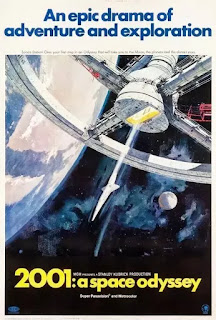





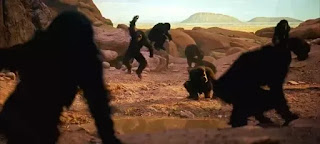

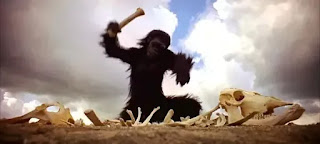
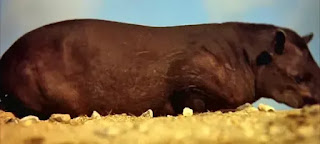


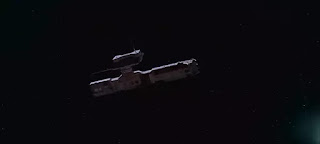









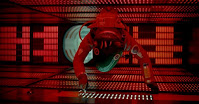










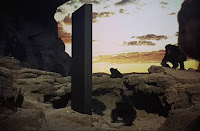







Good one...
ReplyDeleteThanks bhaiya
DeleteQuite informative..well done.
ReplyDeleteThanks Rajat bhai
Deletenext level , sir
ReplyDeleteThanks Amrit bro
DeleteNice content bro👏👏
ReplyDeleteThanks bro
DeleteOne of the cinematic marvels made by Stanley kubrick great movie and great explanation summing up all the theories and ideologies.
ReplyDelete